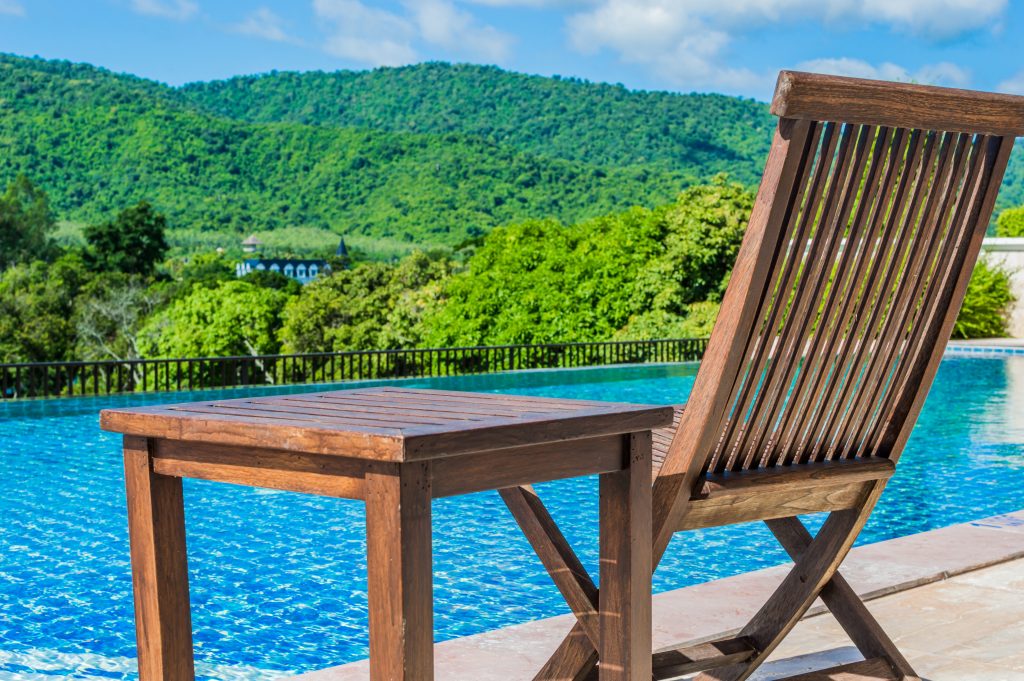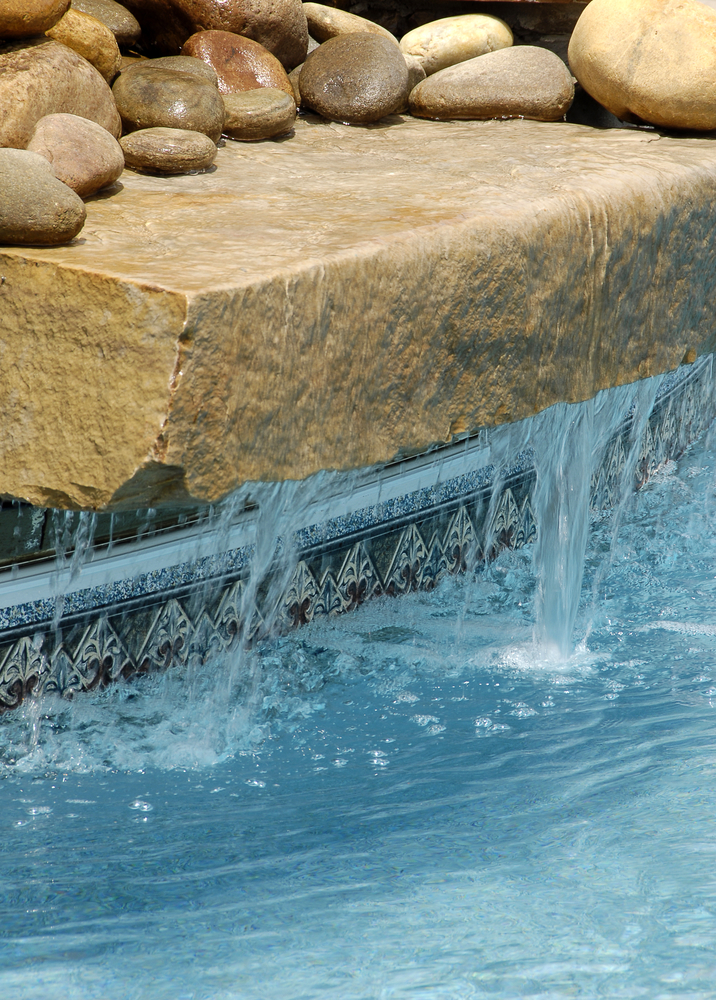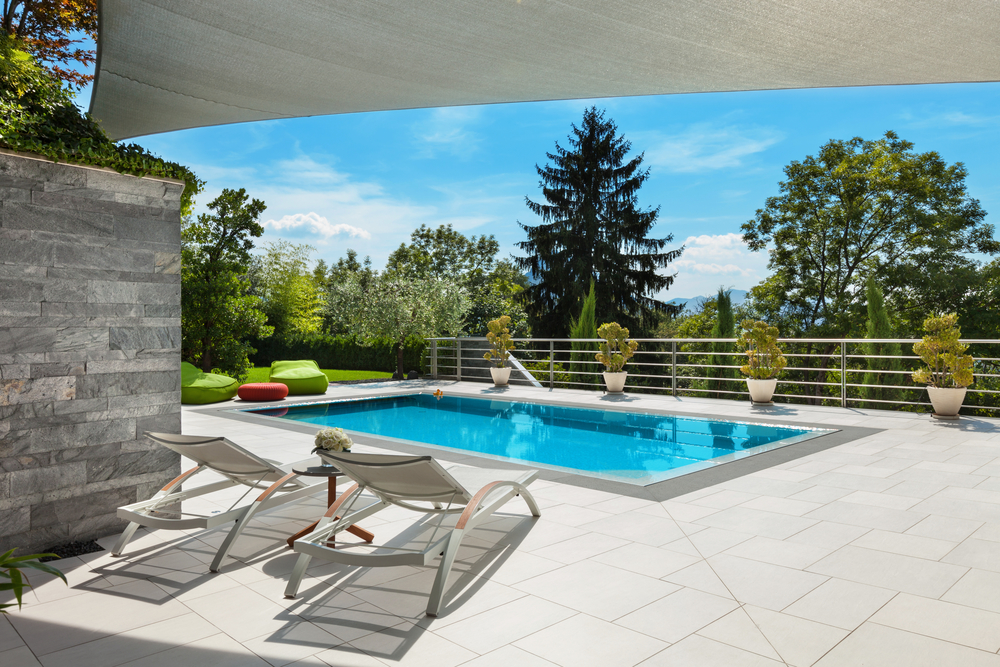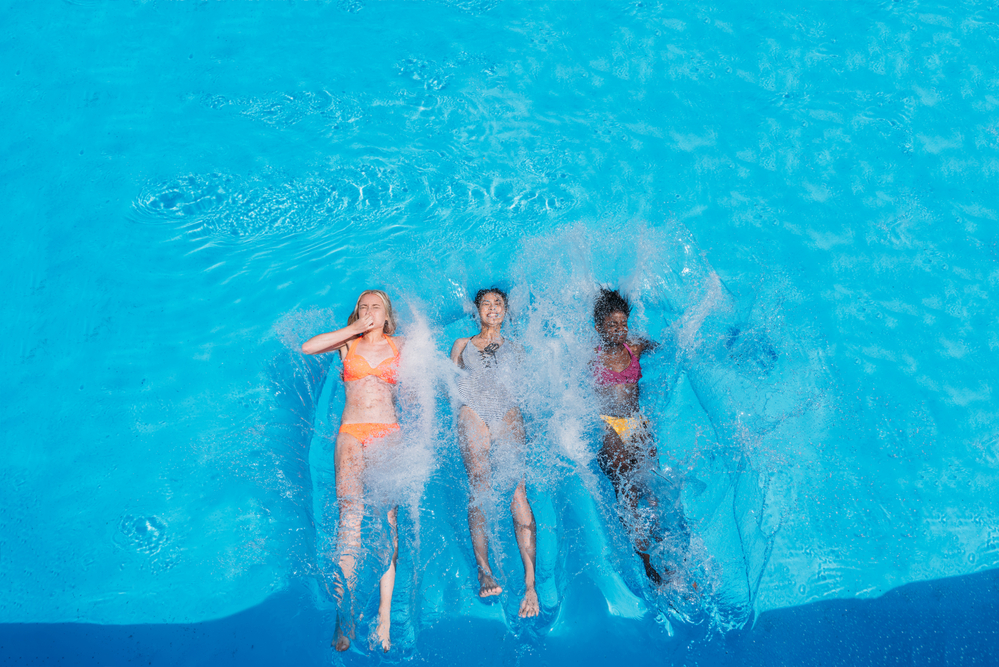Can you be a swimming pool owner and still be eco- and environmentally-friendly? It is a delicate balancing act, but the short answer is “yes” you can have both.
Consider this: A swimming pool that is fifteen feet by thirty feet and four feet deep will hold close to 40,000 gallons of water. That is more water in a structure in your back yard than is used by all of the people living in any one state in the United States! Yes, your pool uses more water than all of the water consumed by users in an entire state! Mind-boggling, right?
Add to that staggering water usage figure the fact that all of the swimming pools (combined) in the United States use more than 10 billion kilowatt hours of energy annually! Now factor in that those kilowatt hours product more than seven million tons of carbon dioxide. Those emissions are released into the atmosphere and are then absorbed by more than five million acres of forests across the United States annually. Whew! None of these figures add in any other greenhouse gases that are emitted into the atmosphere; these emissions are a by-product of the energy required to run the pool, or even during the process of evaporation of the water from the pool.
With all of that said, how can you possibly be more eco- and environmentally-friendly and still enjoy your swimming pool? We have steps you can take to help you do just that.
Eco-Friendly Swimming Pools Aren’t Out Of Reach
 Cover it up
Cover it up
The easiest and most cost-effective step you can take is to cover your swimming pool when you’re not using it! If you want to assure that you will cover the pool, you may want to have a pool cover device installed. With these devices, at the push of a button, the cover retracts then opens for ease in use.
We know that if it’s difficult to put the cover on and off, you won’t do it. We get it!
Swimming pools — those that are not covered, especially — lose between four and six feet of water annually. Evaporation is the leading cause of that lost water, although splash-out certainly contributes. When the water is lost through evaporation, not only do you need to refill the pool, but you need to add more chemicals to get the water in balance.
When you keep your swimming pool uncovered, the rate of evaporation increases. Using a cover is estimated to cut back on heat and water loss in a swimming pool by more than 95 percent.
Other benefits of using a pool cover:
- Cut back on heat loss (especially important if you heat the pool)
- Keep dirt and debris out and that could lead to fewer hours of cleaning needed
- Use fewer chemicals if you don’t need to add water
- You won’t have to refill the pool as often
- Depending on the type of cover you buy, you could be adding an additional layer of safety to keep children and pets from falling into the water.
Solar covers will heat the pool water and help slow the rate of water evaporation; it is an option to consider.
Swimming pool pumps
If your swimming pool is still operating on a single-speed pump, call your pool contractor as soon as you’ve finished reading this article and talk with him about having a variable speed pump installed.
You will see a return on your investment in the purchase of the variable speed pump in the very near term. A variable speed pump is more expensive than a single speed, but if you want to be more eco-friendly you will want a variable speed pump for your pool.
Pool pump controller
When did you turn the pool pump on? Did you remember to turn it off? Yes you need to run the pool pump daily and for many hours of the day, but you don’t need to run it 24-hours a day! When you have a pool pump controller installed you can schedule when the pump will turn on and turn off and you won’t forget it.
We suggest running the pool pump during the overnight hours because:
- There is a lower draw on the power grid
- You save money
- You can add the pool chemicals before bedtime and the pool will be ready in the morning.
 Cartridge pool filters
Cartridge pool filters
The swimming pool filter you use in your family swimming pool can have an impact on its eco-friendliness. It’s a myth that sand or DE (short for diatomaceous earth) filters are more eco-friendly. The reason for this thinking is that those filters use natural materials — sand or DE — to filter out organic materials, algae and other debris from the pool water.
Unfortunately, sand and DE filters are believed to cause more harm than good. These two filter types require the backwashing and that usees close to 250 gallons of water to perform that task! When you add in that a sand or DE filter requires a backwashing every couple of weeks — or at least monthly — the pool is consuming up to 4,000 gallons of water. That is water that’s wasted!
Using a cartridge filter is not a walk in the park — maintenance wise. They require the cartridge itself to be removed, thoroughly cleaned then put back into the filter. This may be tedious BUT a cartridge filter doesn’t require backwashing of the pool and will save a LOT of water (and money!)
Automated pool water chemistry
The pool water needs to have its water chemistry tested regularly. This may need to be done daily if you use the pool a lot. Your pool contractor can install an automatic chemistry regulation device that will measure the chemistry and add those chemicals necessary to keep the water balanced. This may be ideal to keep the water chemistry where it belongs between pool service visits.
Clean with ozone, metal or light
Moving away from chlorine to clean the pool water is not only environmentally-friendly, but it can help keep you healthier because you won’t be exposed to the chemical while you’re swimming. Let us take a step back and say that chlorine is the traditional way to clean a swimming pool and if it’s used correctly and balanced properly the chance of health risk is low.
An ozone generator cleans the way a saltwater pool system does. Rather than converting salt to chlorine, ozone generators suck air into a chamber filled with electrodes which then break down oxygen molecules and convert them into ozone. The converted ozone is sent into the pool water to kill bacteria and organic materials and sanitizes the pool water.
Another pool sanitizing system emits electrically charged silver and copper ions into the water. Silver ions kill bacteria and viruses. Copper ions kill algae and other organic matter. The ions don’t break down as easily as ozone, but they do keep the pool water more balanced and cleaner than ozone.
UV lights can sanitize the water through the use of ultraviolet based cleaning systems. With this sanitization system, UV rays are emitted that have concentrated electromagnetic energy. The energy targets DNA or RNA of algae, bacteria, viruses, cysts, protozoa and other microorganisms. UV rays also destroy organic matter and prevent the formation of harmful chlorine by-products. UV systems cannot rid the water of non-organic contaminants and that means you will still need to add some chlorine into the water.
Natural pools
If you have the space for a swimming pool and a holding area for plantlife you can have a natural pool installed in the back yard.
Natural pools are the closest a pool owner can get to nature and to having an eco-friendly pool. Unlike traditional swimming pools, a natural pool uses different water plants, stones and even freshwater fish to filter out impurities in the water to keep it clean and pristine.
Pool lighting
LED lights are the most environmentally- and eco-friendly and least expensive to operate! LED will cost you more up front than halogen or incandescent lights, but emit more light at a lower energy draw.
LED pool lights last longer and burn brighter than other pool lighting.
Rainwater for pool refills
If you live in an area of the country that is blessed with a lot of rain, you may want to capture that and use it to refill your swimming pool. You can invest in a rainwater diverter that connects to a downspout to divert the water into the pool. This will require the downspouts to be clean because you don’t want leaves and debris getting to the water. Consider adding a screen to help filter out debris. You may want to consider a rainwater holding tank as a way to keep the water that goes into the pool cleaner. Remember to test the water chemistry and add chemicals as needed once you put the rainwater into the pool. This is the same process you’d need for filling the pool with water from a tap or having it trucked in.
Heat with solar
IA solar pool cover, solar blanket or an entire solar pool heating system is a more environmentally friendly and less expensive way to heat the pool water. Yes, there is an upfront cost for the equipment, but you will see a ROI.
 Check for leaks
Check for leaks
A leaking swimming pool can cost you more money than you’re aware of and lead to the need for more chemicals and to keep refilling the pool! Even a small lead can lead to a loss of an inch of water regularly and that could lead to a loss of more than 100,000 gallons annually!
Slow evaporation with a natural windbreak
Evaporation is the bane of the swimming pool owner. You can slow the rate of evaporation by using a cover as we’d mentioned above but you can also go natural and plant a windbreak. This windbreak will slow the rate of water blowing across the top of the pool and can also provide a natural privacy barrier. A natural windbreak can also absorb some of the chemicals that are emitted into the air from your pool.
Don’t plant pools that will drop a lot of leaves, have creeping roots or draw birds and bees. Your pool contractor will let you know what the best trees and shrubbery to plant.
Be an environmentally- and eco-friendly pool owner!
You can choose one, or more of these tips or incorporate a few of them slowly throughout the pool season. Talk with your pool contractor and show him or her this list and see what they feel will be a great first (or second) step to get your pool more environmentally friendly.

